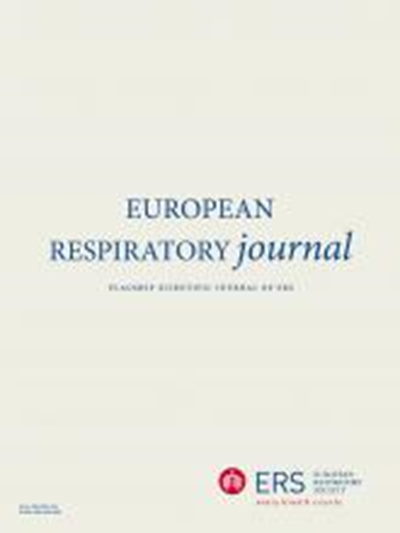安萨颈椎刺激对上气道通畅性的影响:基于结构的分析
IF 16.6
1区 医学
Q1 RESPIRATORY SYSTEM
引用次数: 0
摘要
理由颈下肌刺激(ACS)被认为是治疗阻塞性睡眠呼吸暂停(OSA)的一种神经刺激疗法。ACS 通过向尾部牵拉咽部来稳定咽部,但其对腭部、口咽侧壁、舌根或会厌塌陷造成的气流限制的具体影响仍不清楚。在应用 ACS 时,在一定范围的气道正压下对最大吸气气流进行评估。根据测压和内窥镜检查结果对每次呼吸的限流结构进行了分类,并通过线性混合效应模型描述了他们对 ACS 的反应。测量和主要结果41 名参与者共进行了 1761 次呼吸分析。平均而言,双侧 ACS 使观察到的咽部临界关闭(PCRIT)和打开(POPEN)压力降低了 -3.0 [95% 置信区间:[-3.6,-2.0]:[结论双侧 ACS 可降低所有气道限流结构的塌陷度。与舌根相比,ACS 对腭、口咽侧壁和会厌塌陷的影响更大。本文章由计算机程序翻译,如有差异,请以英文原文为准。
Ansa Cervicalis Stimulation Effects on Upper Airway Patency: A Structure-Based Analysis.
RATIONALE
Ansa cervicalis stimulation (ACS) of the infrahyoid muscles has been proposed as a neurostimulation therapy for obstructive sleep apnea (OSA). ACS stabilizes the pharynx by pulling it caudally, but its specific effects on flow limitation caused by palatal, oropharyngeal lateral wall, tongue base, or epiglottis collapse remains unclear.
OBJECTIVES
To quantify the effect of ACS on collapsibility of different pharyngeal flow-limiting structures.
METHODS
Participants with OSA underwent bilateral ACS during drug-induced sleep endoscopy. Maximum inspiratory airflow was assessed over a range of positive airway pressures while ACS was applied. The flow-limiting structure for each breath was classified based on manometric and endoscopic findings and a linear mixed-effects model characterized their response to ACS. The influence of patient characteristics was explored with univariate models.
MEASUREMENTS AND MAIN RESULTS
Forty-one participants yielded 1761 breaths for analysis. On average, bilateral ACS decreased the observed pharyngeal critical closing (PCRIT) and opening (POPEN) pressures by -3.0 [95% confidence interval: [-3.6, -2.3] and -3.7 [-4.4, -3.0] cmH2O, respectively (p<0.001). During tongue base obstruction, modeled ACS effects for PCRIT and POPEN were -2.0 [-2.7, -1.4] and -3.1 [-3.8, -2.4] cmH2O, respectively (p<0.001). Greater reductions were generally observed for other flow-limiting structures. A lower apnea-hypopnea index was associated with a greater decrease in POPEN (p<0.01). Other patient characteristics, including body mass index, did not influence PCRIT or POPEN (p>0.05).
CONCLUSIONS
Bilateral ACS decreased collapsibility of all airway flow-limiting structures. ACS generally had greater effects on palatal, oropharyngeal lateral wall, and epiglottic collapse than the tongue base.
求助全文
通过发布文献求助,成功后即可免费获取论文全文。
去求助
来源期刊

European Respiratory Journal
医学-呼吸系统
CiteScore
27.50
自引率
3.30%
发文量
345
审稿时长
2-4 weeks
期刊介绍:
The European Respiratory Journal (ERJ) is the flagship journal of the European Respiratory Society. It has a current impact factor of 24.9. The journal covers various aspects of adult and paediatric respiratory medicine, including cell biology, epidemiology, immunology, oncology, pathophysiology, imaging, occupational medicine, intensive care, sleep medicine, and thoracic surgery. In addition to original research material, the ERJ publishes editorial commentaries, reviews, short research letters, and correspondence to the editor. The articles are published continuously and collected into 12 monthly issues in two volumes per year.
 求助内容:
求助内容: 应助结果提醒方式:
应助结果提醒方式:


